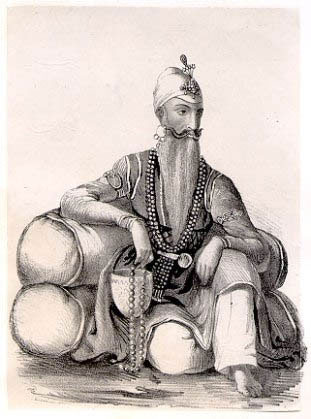Dewa Singh
The military administration of Maharaja Ranjit Singh encompassed two divisions of army. One was known as Fauj-i-Am or the regular army and the other was Fauji-be-Qawaid or the irregular force. The regular army was divided into three parts namely infantry, cavalry and artillery. The creation of the infantry was a gradual process. The Sikhs looked upon service as contempt and refused to join its ranks. Maharaja Ranjit Singh persisted in his efforts and ultimately succeeded in his mission. The result was that by 1818 the inhabitants of Punjab region began to dominate the infantry. In 1822, the Maharaja employed French officers for the training of his troops. At the centre Ranjit Singh had an efficient pay office for the army.

Fauj-i-Khas or French Legion was the model brigade of the Sikh army. It was raised in 1822 by General Ventura and Allard. Its normal strength was four battalions of infantry, two regiments of cavalry and one troop of artillery comprising 24 guns. Special efforts were made for its training, discipline and equipment. The infantry section of the Brigade consisted of the Khas battalion, a Gurkha battalion and two more commanded by Dewa Singh and Sham Sota. The Cavalry portion comprised a Khas regiment and a dragoon regiment. The artillery was known as the crops of General Ilahi Baksh. Fauj-i-be-Qawaid or the irregular army was composed chiefly of horsemen. They were divided into two sections namely the Ghorchara Khas and Misaldars. The former was a single organisation and was recruited from the landed gentry. Many members were relatives of the dignitaries of the court. They supplied their own equipment and were regularly paid at first in Jagirs but later on in cash. The Misaldars comprised all the petty chiefs who were deprived of their territories and were prepared to serve under Ranjit Singh at the head of respective bands of horsemen.
